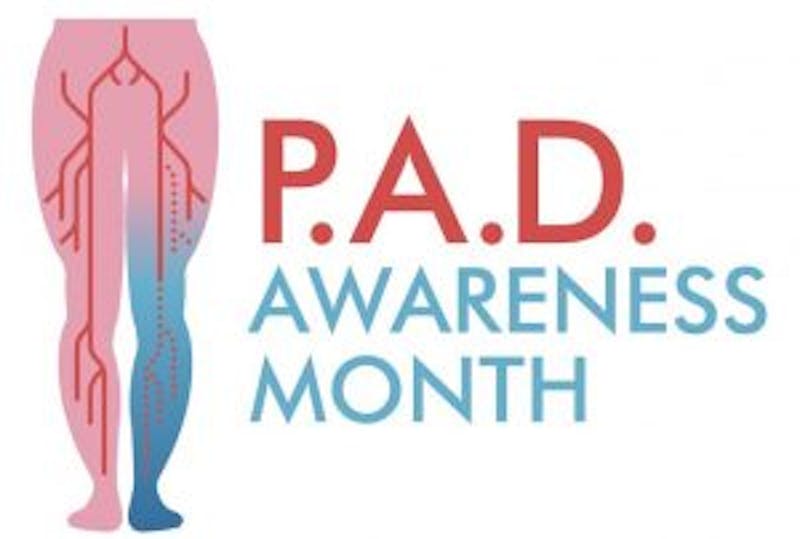
September is Peripheral Artery Disease (PAD) Awareness Month. The disease is the least recognized artery condition because many mistake its symptoms for arthritis or simply old age. However, early detection and treatment of PAD can significantly reduce pain and the risk of heart attack and stroke.
What is PAD?
PAD is a condition that develops when arteries that supply oxygen-rich blood to the limbs and internal organs are narrowed or blocked as a result of atherosclerosis (a buildup of plaque). The restricted blood flow can cause leg pain and cramping while walking or climbing stairs and ulcers on the feet.
One in every 20 Americans over the age of 50 has PAD, and an estimated one out of every three people with diabetes over the age of 50 has the condition. However, many of those with warning signs don’t realize they have PAD as it can be difficult to distinguish common joint pains from pain caused by PAD. Left untreated, PAD can lead to heart attack, stroke, and amputation.
Symptoms
Many patients with PAD do not have symptoms. Others may experience the following:
- Leg pain, cramping or tiredness while walking or climbing stairs
- This pain typically goes away with rest.
- Leg numbness or tingling
- Coldness in the lower legs or feet
- Chronic sores on the feet or toes
- Discoloration of the legs, feet or toes
- Thickened toenails
- Decreased hair growth on legs
- Calf muscle atrophy
- A weak or absent pulse in the legs or feet
- Impotence
- Gangrene
PAD can sometimes be confused with arthritis or sciatica pain. It’s important to remember PAD leg pain occurs in the muscles, not the joints.
PAD Risk Factors
People over the age of 50 are at a higher risk of developing PAD, and the disease is slightly more common in men than women. Additional risk factors include:
- Diabetes
- Smoking
- High blood pressure
- High cholesterol levels
- Obesity
- A history of heart disease, heart attack or stroke
- A family history of heart disease, heart attack or stroke
PAD Treatment at Surgical Associates
If detected early, lifestyle changes and medication can sometimes treat and manage PAD. Your doctor may recommend the following steps:
- Maintaining healthy blood sugar levels
- Quitting smoking
- Lowering high cholesterol and blood pressure
- Managing these conditions can improve circulation.
- Exercising
- Exercise can increase circulation and reduce leg and foot pain.
- Eating foods low in saturated fat and calories
- Regular follow-up care to monitor your condition
In severe cases of PAD, surgery may be needed to open arteries that are blocked or narrowed.
- Angioplasty involves threading a small tube into a patient’s artery through the arm or groin. Once it is near the blockage, an attached balloon is inflated, widening the narrowed artery. The surgeon may then insert a wire tube, called a stent, to keep the artery open.
- Artery bypass surgery is a procedure in which a blood vessel is taken from another part of the body and reattached to detour around a blocked artery. This creates a new path for blood to flow to the body’s tissues.
Treatment is chosen based on the pattern and extent of blockages a patient is experiencing, as well as his or her overall health.
Schedule an Appointment for a FREE PAD Screening
In recognition of September being PAD Awareness Month, Surgical Associates will be performing FREE PAD screenings.
During the appointment, a patient questionnaire and ankle-brachial index (ABI) will be used to evaluate risk. An ABI is a quick, painless procedure that compares the blood pressure in your ankle to the blood pressure in your arm to determine how well your blood is flowing.
For more information about peripheral artery disease or to schedule a FREE peripheral artery disease screening, call Surgical Associates at 1-888-278-3795.


